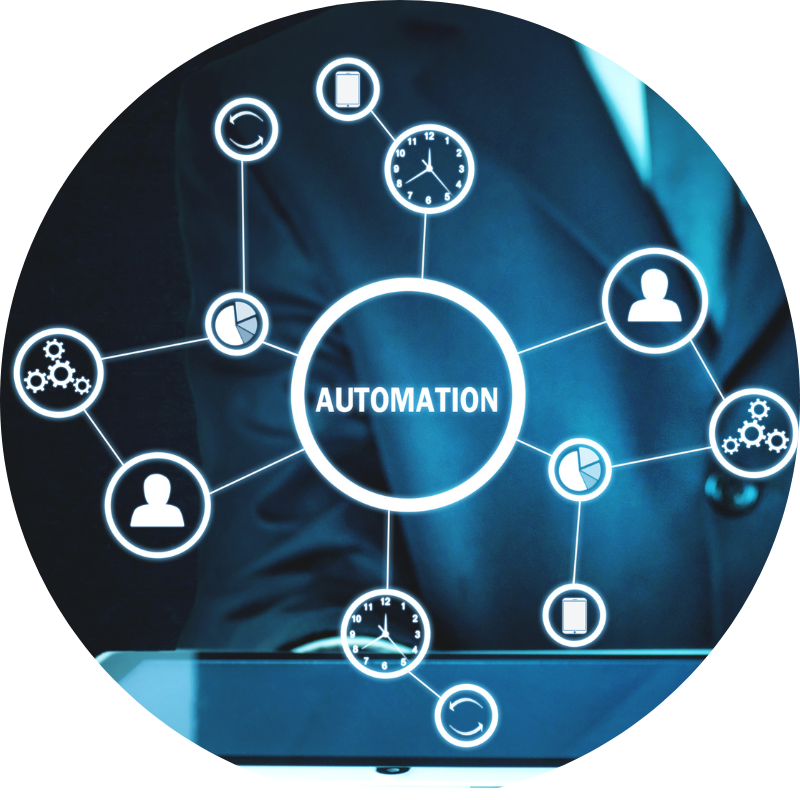Hyperautomation is the next step in the evolution of automation. With hyperautomation, organizations are able to automate more tasks and processes than ever before by boosting efficiency and productivity, reducing costs, and improving customer service and satisfaction levels.
Rather than a single application or software, hyperautomation bundles together a whole host of technologies to help organizations take their business to the next level. Examples include:
- Machine Learning
- Deep Learning
- Robotic Process Automation (RPA)
- Natural Language Processing (NLP)
- Process & Task Mining Tools
- Workload Automation Tools
Implementing hyperautomation in your organization requires careful planning and execution. Consider these steps to get started:
Assess and Strategize – Begin my conducting a thorough assessment of your existing business processes. Identify the areas that can benefit from automation and prioritize them based on their impact on productivity, efficiency, and cost savings. Develop a clear strategy outlining your hyperautomation goals and the processes you plan to automate.
Identify Suitable Tools and Technologies – Research and select the right automation tools and technologies that align with your business needs. This may include Robotic Process Automation (RPA) software, Artificial Intelligence (AI) platforms, Machine Learning algorithms, Natural Language Processing (NLP), and other relevant solutions.
Data Integration and Preparation – Hyperautomation relies heavily on data. Ensure that your data is of high quality and stored in accessible formats. Implement data integration processes to connect various systems and applications seamlessly.
Pilot Projects and Proof of Concept – Start with a small-scale project to test the effectiveness of the chosen automation tools. These proofs of concepts will help you validate the benefits of hyperautomation and iron out any challenges before full-scale implementation.
Employee Training and Involvement – Train employees in using, and collaborating with, automation technologies. Involving employees in the automation process from the beginning and demonstrating its benefits can foster acceptance.
Collaboration Between IT and Business Teams – Hyperautomation initiatives require close collaboration. IT will manage the implementation and integration of technologies, while business teams provide insights into process optimization.
Continuous Improvement – Hyperautomation is an ongoing journey. Continuously monitor and measure the performance of automated processes. Collect feedback from users and stakeholders to identify areas for improvement and optimize efforts.
Scale Gradually – Once you have successfully implemented automation in pilot projects, scale gradually across differed business units and processes. Expand more complex processes as your team gains confidence and experience.
Security and Compliance – As your organization automates processes that involve sensitive data, ensure that you prioritize security and comply with regulations. For example, implement encryption access controls and conduct regular security audits to safeguard the data.
Keep in mind that hyperautomation is not a one-size-fits-all approach. Tailor your automation efforts to suit your organization’s specific needs and objectives, and be prepared to adapt your strategy as business needs grow and evolve over time.
SDP payroll professionals assist our clients with payroll, workforce management, benefits administration, and human resources needs. To get started or learn more about these solutions, simply contact us today.
And, for more information about Southland Data Processing, call us today at 909.946.2032. Or, click here and Let’s Talk!
For the latest updates, follow us on LinkedIn, Facebook, Twitter, YouTube, Instagram and TikTok for even more business tips and news.
*Southland Data Processing, Inc. (“SDP”) is not a law firm. This article is intended for informational purposes only and should not be relied upon in reaching a conclusion in a particular area of law. Applicability of the legal principles discussed may differ substantially in individual situations. Receipt of this or any other SDP materials does not create an attorney-client relationship. SDP is not responsible for any inadvertent errors that may occur in the publishing process.


